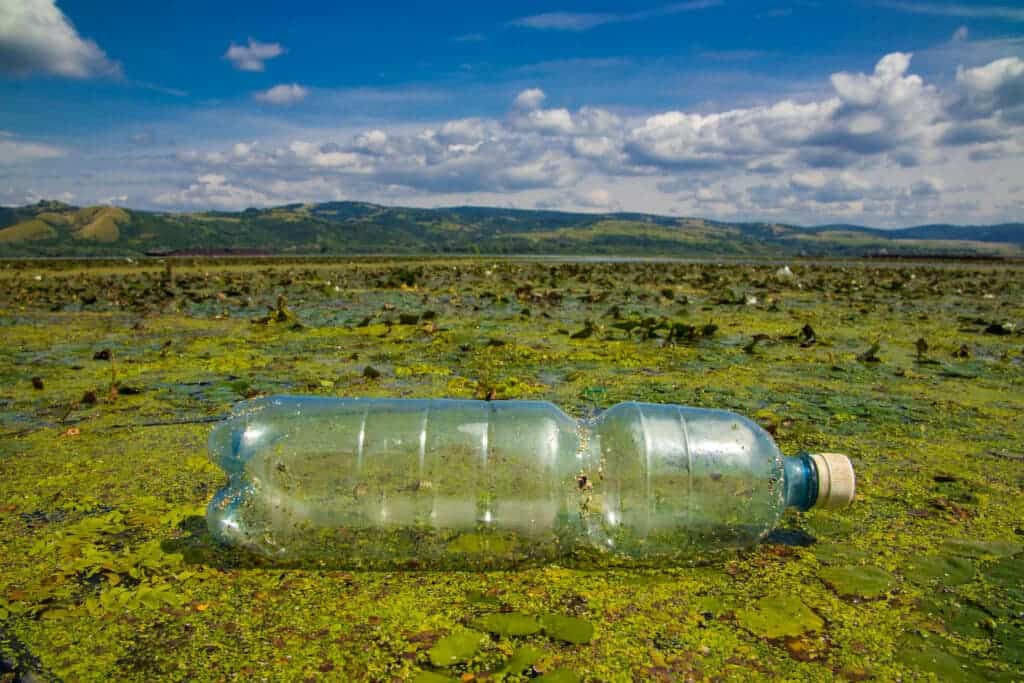The global efforts to tackle plastic waste a leading environmental problem could result in up to $400 billion of stranded petrochemical assets for the oil industry, as the companies are betting on sustained demand for plastics to compensate for declining oil and gas demand.

The report “The Future’s Not in Plastics” by the think tank Carbon Tracker and the consultancy SYSTEMIQ found that demand for virgin plastics could drop from 4% per year to below 1%, with a peak of demand in 2027.
This would lead to large losses for fossil fuel investors, already dealing with low crude prices.
“The plastics industry, in its assumption of a doubling of demand for plastics in the next 10, 20 years or so, is making a bet that society will fail to find any solutions to reduce, substitute or recycle plastic,” report author Kingsmill Bond, energy strategist at Carbon Tracker, told AFP.
The production of plastics has expanded about 4% every year since 2000, according to the report, with most companies expecting that growth to continue thanks to emerging economies.
While plastics represent less than 9% of the oil demand, they are the main component of oil demand growth, the report added.
The oil sector is planning to invest at least $400 billion in the next five years to expand the supply for virgin plastics by a quarter. The International Energy Agency estimated earlier this year that plastics will be the main driver of oil demand growth in the coming years.
But a lower consumption by consumers would throw a wrench into the companies’ plans, while simultaneously benefitting the environment.
The widespread use of plastic has created a global pollution crisis. About eight million tons reach the oceans every year, affecting wildlife and even entering our organisms through seafood. This has led governments to take action, improving recycling, imposing strict rules on waste disposal, and introducing bans on single-use items. However, action from companies has been rather underwhelming.
“For far too long there has been this delusional narrative coming from the fossil fuel industry to invest hundreds of billions of pounds to grow the supply of virgin plastics by a quarter over the next five years. This is all in the name of compensating for the impact of clean energy technologies which are driving their profits down, Sian Sutherland, A Plastic Planet co-founder, said in a statement.
The hidden costs
Plastics impose what is called a “massive untaxed externality” on society — a negative consequence generated by economic activity (such as emitting greenhouse gas emissions and generating pollution), which is unaccounted for. The authors of the report estimate the plastic externality at $1,000 per ton or $350 billion a year due to health costs, collection costs and ocean pollution.
The report also calculated the carbon footprint of the plastics sector, estimating it at about five tons of CO2 per ton of plastic, more if it’s burned and less if it’s landfilled. That’s twice the emissions generated by a ton of oil. If plastic demand grows, annual emissions of plastics would double by mid-century. But that’s not even the whole story. The report also described the plastic industry as extremely wasteful.
About 36% of plastic is produced for single-use applications and 40% of it is mismanaged, ending in the ocean and terrestrial leakage. Recycling rates in the industry are also very low, as only 20% of plastics are sent for recycling.
Such high costs of the industry are leading to a large concern of the public and government officials. An IPSOS poll last year, for example, found that between 70% and 80% of the public wants to reduce plastics and force industry to go along, including a ban on single-use plastics.
As governments get serious on the issue, there is a set of existing solutions, much cheaper than maintaining the status quo, according to the report.
These include reducing demand through design, reuse, and new delivery models; substituting other products like compostables or paper; and better recycling.


